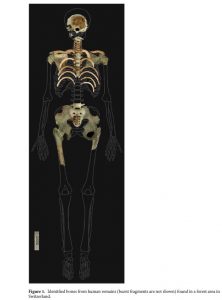Before DNA evidence became the golden standard for forensic labs, convicting a criminal often meant dusting the crime scene for prints.
All forensic evidence are liable to error and fingerprints are no exception. In general, there are two types of error: false negative and false positive. A false negative occurs when the two fingerprints are a match but the examiner declares the fingerprints to be different. A false positive is when two fingerprints are not a match but the examiner concluded otherwise. In both cases the consequences are different, while false negatives may not entirely exonerate a criminal, false positives can lead to wrongful convictions where an innocent person can face jail time for something they did not do.

Example of a fingerprint Source: Wikimedia Commons
There are eight common fingerprint patterns: arches, tented arches, right loops, left loops, plain whorls, central pocket loops and double loops. When the lines or ridges on a finger develops and meets other ridges, the two ridges can interact in many ways, resulting in what is called a minutiae. Since fingerprints depend both on genetic and environmental factors, the patterns developed are very unique. Even identical twins can develop different fingerprints. However, theory and practice can be very different. In the modern age, there still is not a definitive certainty in how unique the match between fingerprints are. It was claimed that a false positive was one in 64 million. In one study, researchers found fingerprint exams had a false positive error rate of 0.1% and a false negative rate of 7.5%. These numbers show that human error and the quality of fingerprints can significantly influence how forensic experts perceive the evidence.
In the famous case of the Madrid train bombings, Brandon Mayfield was wrongfully convicted based on fingerprints that were found at the scene due to poor quality of the fingerprints. Later on, when the five fingerprint experts were asked to re-examine these prints, three experts reversed their conclusion and claimed the results were inconclusive. In conclusion, while fingerprints are a useful tool, they are not infallible and prone to human error more than one expects.


